Ski boots

Skiing is something very exciting, and sometimes even extreme. There are several types of skiing: cross-country skiing, alpine skiing, ski jumping and even cross-country skiing.


In addition, skiing is divided into several categories: Nordic, Alpine, Freestyle and Snowboarding. For each category there is a specific type of ski and sports equipment, thanks to which you can most easily and successfully perform tricks or cross-country skiing.


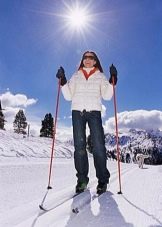
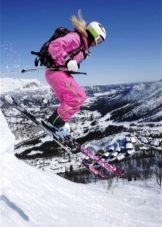
Also, some Olympic sports include skiing, such as biathlon or ski touring.
Skiing is also good for winter hikes, as the large amount of snowfall can make it somewhat difficult to navigate through forest areas. On skis, it is much easier and safer to move on deep snow, due to the distribution of the load.
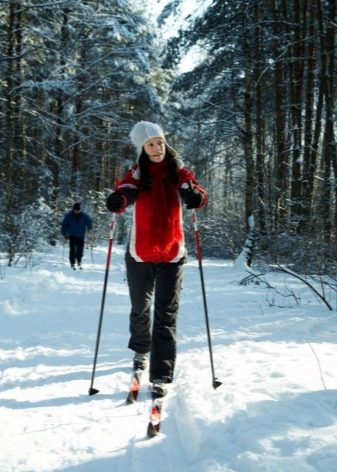

When moving on your own, you risk falling into a snowdrift with your foot, and in some cases even injuring your joints, twisting your leg or even earning a fracture.
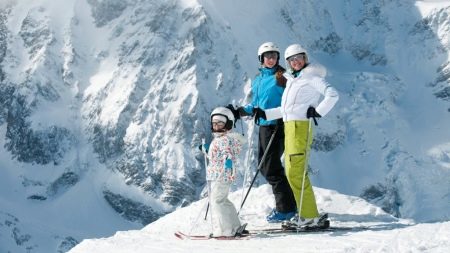
By themselves, skis appeared a long time ago and were common in human habitats, where a harsh northern climate with abundant snowfall prevails, because it was skis that were the most common way to travel through the snow.
But in the old days, skis were attached to their feet with the help of some improvised means, strings and elastic bands. And only a little later, ski boots appeared, which greatly facilitated the process of skiing.



Ski boots do not have any special definition, it is hidden in the name itself - these are shoes designed for skiing, shoes that are worn exclusively with skis.
Ski boots are essential in order to properly secure and secure the foot on the skis. Strong and correct fixation is a guarantee of safe riding, keeping all bones and joints intact.


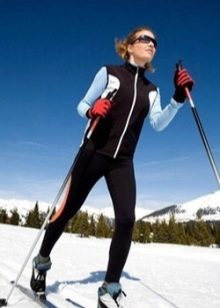
Features and characteristics
Ski boots, being a rather unusual shoe of a sports type, must have a number of characteristics and features. For example, universal boots should not be too long and have medium rigidity and are suitable for several types of skis in terms of fastening method.
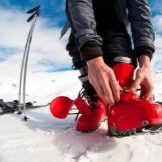
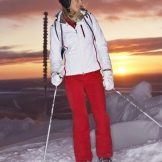


Ski boots for skating have a special fastening, the design of which is called "boot in boot" and is designed in such a way that when moving, the model is very similar to a regular skate and its movements.

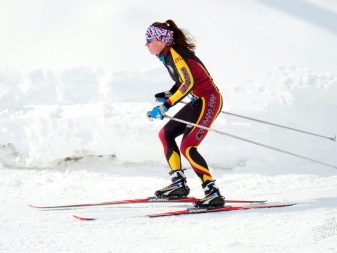
The outsole of ski boots is made of a special type of dense, thermoplastic rubber. It is quite rigid and does not lend itself to strong deformation. The state of the sole changes only in accordance with changes in the position of the foot (if this is a classic model), or even does not change or deform at all, if the sole has strong rigidity and we are talking, for example, about alpine skiing.

Winter boots have insulation, which is provided through the use of natural heat-resistant materials. Some combined models combine several types of materials, as well as double insulation, due to which the boots can be used even in the most persistent frosts.



There are sliding ski boots, which are mainly presented in children's models. Since the child's foot is growing rapidly, sliding shoes are able to adapt to certain parameters of the foot and last much longer.


Models
The range of ski boots is not so wide, mainly, the differences lie in the varieties corresponding to a particular type of skiing. The main differences between the models are only in the division into men, women and children.




Womens
Models tend to have a more sophisticated look. They are made from light-colored materials and often feature attractive decorative prints such as flowers, curls and feminine ornaments.




Mens
The models look more restrained, they are made mainly in dark colors and have practically no decorative elements. Male models are most often decorated with stripes, a combination of different colors or even a checkered print.

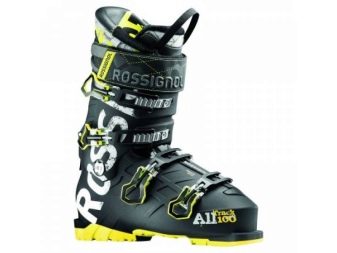


Baby
Bright colors are typical for children's models. Boys' ski boots come in green, red, blue, orange and purple. Boots for girls are most often in yellow, pink, blue and light green colors.
In addition, children's models are often decorated with different prints, including images of cartoon characters.

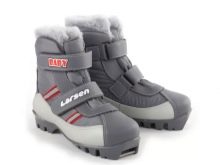

Views
There are quite a few varieties of ski boots, as well as varieties of skiing, each of which is characterized by a number of specific features. And this or that kind of ski boots must match these features.
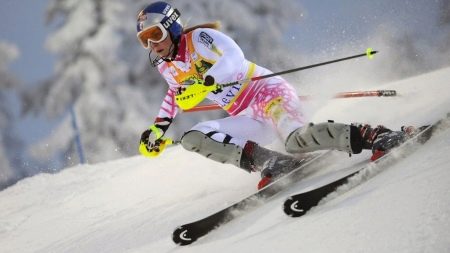
- For example, cross-country ski boots are designed for high-speed movement over rough terrain, with the presence of snow cover.... There should be insulation inside the boot for maximum protection of the foot from the cold. The outer shell is made of durable, tough material that protects the foot from injury.



- Racing ski boots practically do not differ from cross-country ski boots and have all the same functional characteristics, with the exception of the bindings, which in this type are more durable.

- Classic ski boots do not have a number of special characteristics, because with this type of skiing, the minimum load on the ankle is carried out. The boots for the classic ride are low, with a soft sole and have no cuffs. Classic ski boots are divided into hiking, walking, professional and athletic models.



- Expedition ski boots designed for long hikes may be suitable for hunting or hiking skis. Very often this model is disguised as ordinary hiking boots and is equipped with lacing, which is even better, since a stronger fixation of the leg is provided.


- A separate model exists for skiathlon - both classic and skate racing. This type of boot must have universal characteristics and be suitable for both types of skis, match their bindings.

- Snowboots have a rather interesting look, reminiscent of ordinary sports winter boots. This model is the most comfortable and suitable for skiing with children. The insulated lining and the most comfortable last provide the foot with a safe position and protection from the cold.


There are also other types of ski boots, for example:
- with two brackets - for better fixation;
- welted - an old cropped model with a classic square toe, featuring versatile characteristics;
- Heated - to provide maximum warmth for skiing in the coldest frosts.
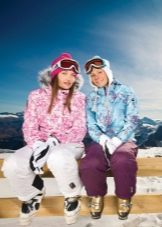

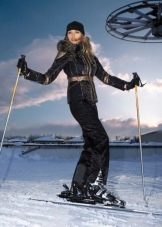

Materials (edit)
Ski boots are made of different materials, on which not only the appearance of the products depends, but also their functional qualities. Consider the features and benefits of each material.




Leather models are very warm and comfortable, but not entirely practical. The fact is that the skin quickly deforms, various kinds of defects appear - cuts, abrasions and scratches. Some of the defects can affect not only the appearance of the boots, but also the durability and functionality of the boots.

Ski boots made from materials such as nubuck are very practical, they are quite durable, do not allow moisture to pass through and do not absorb dirt. Models made of membrane material are quite common, which also have good wear resistance.

For skiing in cold weather, you need to purchase warm ski boots. Insulated models are equipped with a fleece lining, a dense layer of padding polyester or some other insulation.

Some models have a fur lining on the inside, which makes the boots even warmer. In more budgetary options, faux fur is used, while models with a higher cost are lined with natural fur, most often sheepskin.

Ski boots made from softer materials have Velcro fasteners that allow you to adjust the width of the shoe... Models made of denser materials in some cases are equipped with adjustable buckles made of heat-resistant plastic. And some shoes in a sporty style, as already mentioned, have lacing.


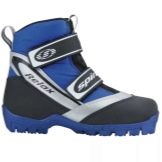





Manufacturing companies
In order to get a good pair of ski boots, you need to study the offers of different manufacturers in order to understand what quality they offer and whether this quality corresponds to the stated pricing policy.

Decathlon
The French brand, which appeared in the early 70s, has not lost its popularity in the sports goods market for quite a long time.
The French manufacturer vouches for the quality of goods and ski boots, including, and also presents many models of all kinds of shades.



Trek
The fashionable Russian brand, which has appeared quite recently, is part of the multi-million dollar corporation A.T.B. - Sport.
The selection of sports items provided by this brand is quite large. Among them are ski boots, made in the same color scheme as skis and ski poles.
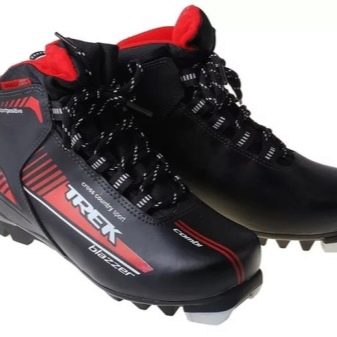

Marax
Another domestic brand, whose products are manufactured at the famous Klinskaya Shoe Factory. The Marax brand is a relatively “young” manufacturer that appeared only in 2003. Although the company is engaged in the production of sportswear, the main focus of this brand is the production of sports shoes.
Among the many products, there are several models of ski boots for different types of skiing.The cost of ski boots from this manufacturer is quite low, which does not affect the quality at all. The boots are comfortable and durable.


Rossignol (Rossignol)
The French brand, founded in 1907, is arguably one of the earliest manufacturers of sporting goods.
The multitude of boot models for both cross-country and alpine skiing provide consumers with an easier and faster choice of the most comfortable ski shoes.


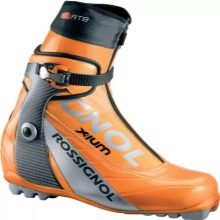
Marpetti
Products of this brand are manufactured and manufactured in Russia, have a rather flexible pricing policy, therefore they are quite affordable for buyers with almost any budget.
Ski boots, although they fall into the category of economy class goods, still have quite good quality and are quite durable.

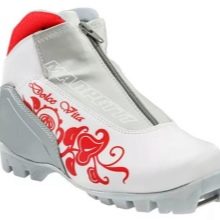

Larsen
? One of the largest Russian brands producing mid-quality ski boots at an affordable price.
The lineup is not as extensive as that of other brands, but there is still a choice. Everyone will be able to find a suitable pair for themselves.




Botas
The brand, which appeared in 1949 in the Czech Republic, was originally called "Botana" and was renamed "Botas" only in 1963.
The production of ski boots is exactly where the company started. The models are of average quality and rather low cost, due to which they are generally available.

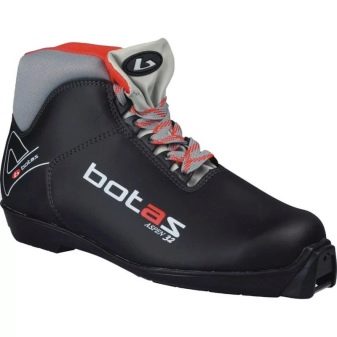
Karjala
The brand, which has existed in the sporting goods market for over fifty years, specializes in the production of high quality goods.
The pricing policy of this company is very flexible, some of the models have a very low cost, while the cost of others can even be called overpriced.
The country of origin is Karelia, which is reflected in the name of the company.


Adidas
Perhaps the most famous sports brand, whose name is heard every day and whose products are available, perhaps, in every wardrobe.
Ski boots Adidas are characterized by the highest quality, which ensures their long-term service, as well as somewhat overpriced.
It is worth paying attention to brands such as Next, Combi, Motor, Quechua, Nordic, which are also very popular among ski sports supporters.

Kits
Boots are often sold in sets with other parts. Such kits can greatly simplify the selection of equipment, since when choosing yourself there is a risk of making a mistake.

The most common kit available at sporting goods stores consists of ski boots and ski boots. Covers are essential to properly store your ski boots and to protect all built-in attachments.




Very often complete sets are available for sale, with sticks and other accessories. Usually, in addition to the boots and poles themselves, such kits also include mounts and the skis themselves, which is very convenient.

Choosing such a set, do not be afraid to "miss", because the bindings have already been selected in accordance with the type of ski and boot model. The choice should be made based only on personal parameters: height, weight and foot size.
When purchasing such a set, it is worth considering its color scheme in order to choose a harmonious combination for a suit.




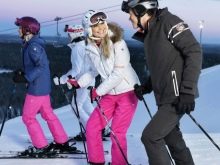
A fairly common part that is often found in ski boot sets is the linings, which are also called protectors. These pads provide the most comfortable walking in ski boots that are not attached to the skis.

In addition, the protectors provide protection for the sole of ski boots and protect it as much as possible from rapid wear. The pads are made of heat-resistant material, so they are suitable for use even in the most severe frosts, in addition, they are quite simple to put on the soles of ski boots.


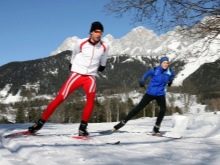
How to choose?
Choosing ski boots is quite simple, you just need to follow a few tips. For example, if you want your ski boots to last as long as possible, you need to opt for high quality models, as a poor quality product will quickly deteriorate.

To choose a comfortable model of ski boots, you need to clearly set some individual parameters:
- carefully measure the foot and determine the size of the leg;
- determine the level of your own training, in accordance with which the model of boots should be chosen;
- determine the style in which you ride;
- choose the model according to the acceptable budget.


When choosing ski boots, there are some functional characteristics to consider, such as rigidity. It is better for beginners to purchase soft boots, and hard boots are perfect for professionals, since they most accurately convey the speed of force and impact on the ski itself.
The weight of the boots plays a role, especially when moving in the year, and the fasteners, which are often called adjusters - with the help of them, the boots can be adjusted to fit the foot, and the size and length of the sole separately, since it differs from the size of the boot itself.




The size
Sizing your ski boots is an essential part of your ski boot selection. But many may have problems and questions about how to choose the right boot for the size. To simplify the choice, there is an international dimensional grid, in which the correspondence between the parameters of the feet and the size of the shoes is established.




If you do not know how to determine the size of your feet, do not panic, because this is quite easy and simple to do. For a more accurate and easy measurement, it is necessary to trace the stack applied to the sheet of paper. Then you need to measure the distance from the most protruding place - the area of the thumb, to the middle of the heel area.


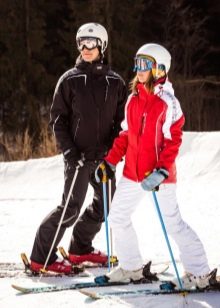
After taking measurements, you must compare the results with the size chart below.
|
Cm |
22 |
22.5 |
23 |
23.5 |
24 |
24.5 |
25 |
25.5 |
26 |
26.5 |
27 |
27.5 |
28 |
28.5 |
29 |
29.5 |
30 |
30.5 |
31 |
31.5 |
32 |
32.5 |
|
UK |
3 |
3.5 |
4 |
4.5 |
5 |
5.5 |
6 |
6.5 |
7 |
7.5 |
8 |
8.5 |
9 |
9.5 |
10 |
10.5 |
11 |
11.5 |
12 |
12.5 |
13 |
13.5 |
|
US m |
5.5 |
6 |
6.5 |
7 |
7.5 |
8 |
8.5 |
9 |
9.5 |
10 |
10.5 |
11 |
11.5 |
12 |
12.5 |
13 |
13.5 |
14 |
14.5 |
|||
|
US w |
5 |
5.5 |
6 |
6.5 |
7 |
7.5 |
8 |
8.5 |
9 |
9.5 |
10 |
10.5 |
11 |
11.5 |
||||||||
|
RU |
35 |
35.5 |
36 |
36.5 |
37 |
38 |
39 |
40 |
41 |
41.5 |
42 |
42.5 |
43 |
43.5 |
44 |
44.5 |
45 |
45.6 |
46 |
46.5 |
47 |
47.5 |
|
EU |
36 1/3 |
36 2/3 |
37 1/2 |
38 |
38 3/3 |
39 1/3 |
40 |
10 2/3 |
41 1/3 |
42 |
42 2/3 |
43 1/3 |
44 |
44 2/3 |
45 1/3 |
46 |
46 1/3 |
47 |
47 1/2 |
48 1/3 |
49 |
49 1/2 |
Reviews
Often, novice athletes are faced with the problem of choosing ski boots and are in long-term thoughts about which one is better to take. In this matter, reviews of people who have already made a purchase and have tested this or that model in business can help.


After analyzing customer reviews, it becomes clear that the choice of boots directly depends on how much a particular model costs. Most often, the choice is not based on functional characteristics, but on price.


Most buyers who prefer more budget models still pay attention to the quality of the boots and try to choose the best possible model. The rest of the buyers tend to buy ski boots at the lowest price, not paying much attention to quality.




If we make a rating of ski boots of different brands, then in the first places will be more economical options for popular brands, such as Karjala, Botas, Larsen. Models with a higher value, for example, Adidas, despite the greater popularity of the brand, occupy the middle positions in the ratings.
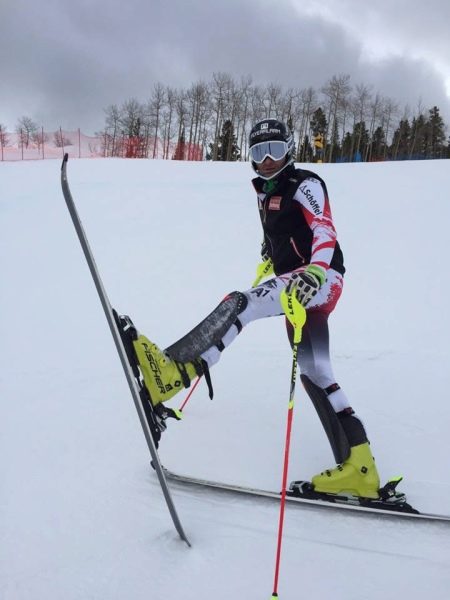
How to fix it?
Since ski boots are not exactly ordinary shoes, it is not enough to just put your feet on the skis and start skiing, you need to fasten the boots to the surface of the skis in order to protect yourself from falling and your body from damage or even fractures.

First of all, you need to familiarize yourself with the types of mounts, which are different. It is necessary that the bindings on the skis and on the boots themselves completely coincide, otherwise, the products simply will not fit each other.

If the skis are equipped with front bindings, then the sole of the ski boots should have a protruding toe, on which there are three holes. To fix such boots, you need to stand on the skis and press the toe with a special metal arc. Such a mount is convenient because the skis are quite suitable for boots of any size, even for children.



Ski enthusiasts probably hear a lot about the SNS and NNN attachment systems. For beginners, not yet knowledgeable skiers, the question arises: what is it?
This type of fastening is subdivided into automatic and mechanical. With mechanical fastening, you need to insert the boots into the fasteners, adjust it to the desired size, and then fix it.
With automatic fastening, everything is much simpler - the side parts of the boot are placed in special grooves and snap into place.
It is worth making sure that the boot is selected in accordance with the size and taking into account the warm sock, as well as that the shoes sit well and the foot feels comfortable. Only with the most comfortable leg position can you take long ski walks.




How to care?
Ski boots are not as easy to maintain as they seem at first glance. Although they are sports shoes, they still do not allow themselves to be neglected, therefore they require appropriate care, in which they can last for many years.
Some ski boot models are already equipped with a waterproof layer applied by the manufacturer during the manufacture of the shoe. And some more budget options do not have such impregnation.


To ensure the waterproofness of your ski boots, you can purchase a special product, or you can do it differently by making such an impregnation at home.
For this we need:
- Fish fat;
- Castor oil.


- Three teaspoons of fish oil should be mixed with one spoonful of castor oil. The resulting mixture must be lubricated with ski boots, pre-warming and shoes, and the resulting liquid, for easier and more effective application.
- It is necessary to apply several coats of this liquid. The gaps of the boots can be lubricated with a special, designed for thawing, ski ointment, which should also be warmed up. And to preserve the quality of the sole, it is necessary to impregnate it with such a material as natural drying oil, which is often used in repair and construction.
- Then you need to hang up your boots and wait until the grease dries. For the best effect, such manipulations are best done about four times during the winter, and also before putting the shoes away in the closet for the summer.

In addition to leaving questions, some are interested in whether it is possible to carry ski boots, if they were purchased back to back?
It should be said right away that ski boots are very tight and it will be impossible to stretch them, no matter how hard you try. Neither clever life hacks nor workshops specializing in the provision of this service will help here.
Only boots designed for cross-country skiing can be carried. As already mentioned, you can contact a specialized workshop, where a service of this kind will be performed with high quality at a very reasonable price.

Or you can use the clever tips for wearing shoes, which are discussed in detail in this video.








